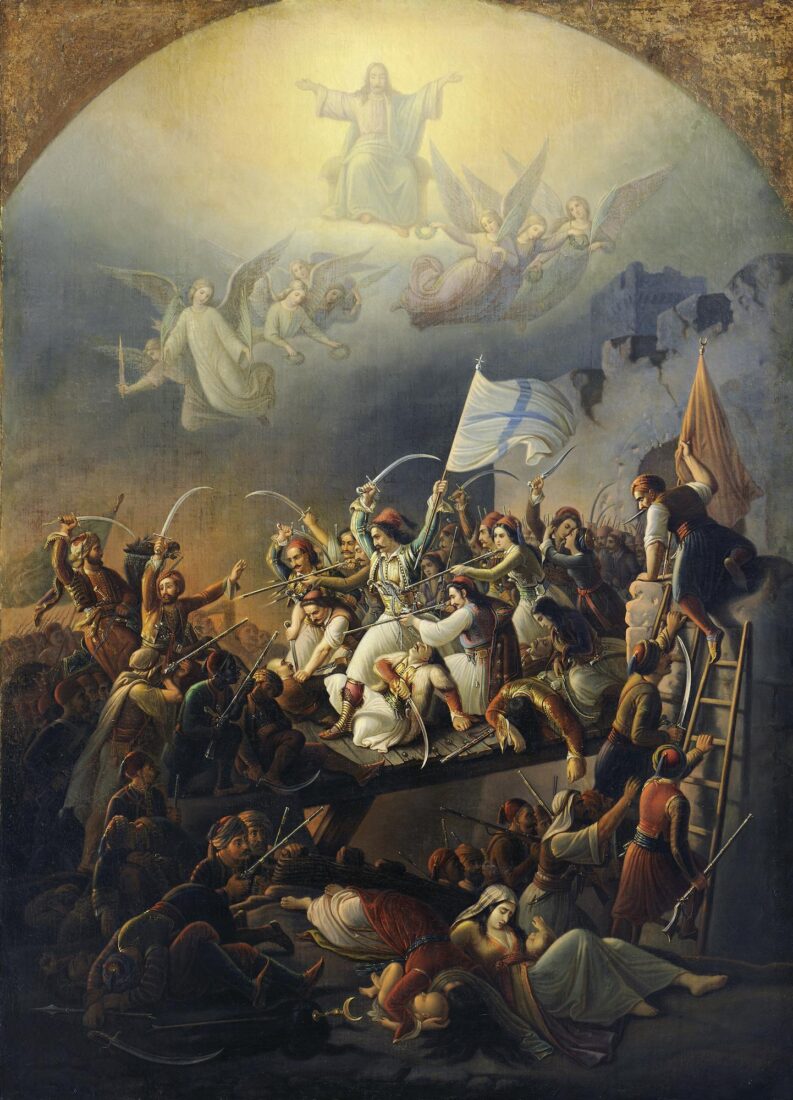We use cookies to make our site work properly, to personalize content and ads, to provide social media features and to analyze our traffic. We also share information about how you use our site with our social media, advertising and analytics partners. Read the Cookies Policy.

Vryzakis Theodoros (1814 or 1819 - 1878)
The Exodus from Missolonghi, 1853
Oil on canvas, 169 x 127 cm
The artist who painted this work, Theodoros Vryzakis, was left an orphan in the War of Independence, when his father was hanged by the Turks. He studied in Munich and became the main exponent of historical painting.
This major painting evokes one of the most tragic and renowned episodes in the Greek struggle for independence – the heroic exodus of the inhabitants of the town of Missolonghi during the night of April 10, 1826. The composition is arranged along a perpendicular axis, without depth, split into two sections: the heavenly and the earthly one. In the heavenly section, on the axis, that is, in the centre of the composition, is seen the enthroned God in a golden cloud, blessing the fighters, while angels with laurel leaves and wreaths are preparing to coronate the heroes. The Greeks believed that their rightful cause enjoyed Christ’s blessing. In the earthly section, on a wood bridge, Greek fighters are seen brandishing their swords, storming out of the wall gate. One of them is waving in his left hand the Greek flag with the cross on the pole. Some have already been wounded. Women and children follow. Mothers and children have fallen in the ditch underneath the bridge. Some are already dead, others lie dying. The fully armed Turks are waiting for the heroic fighters. Some of them are climbing up the walls on a ladder. Uproar, tension, drama prevail. It is as if we could almost hear the noise of weapons and the cries of the wounded. The painter has depicted the scene in great accuracy and meticulousness. This painting is romantic in spirit but academic, calligraphic, careful in implementation. A brown and gold tonal palette of black, white and red prevails.

